Uncovering the Secrets of the Zoo
We go behind the scenes at Nat Geo WILD’s Secrets of the Zoo to bring you what we all need right now: some animals.
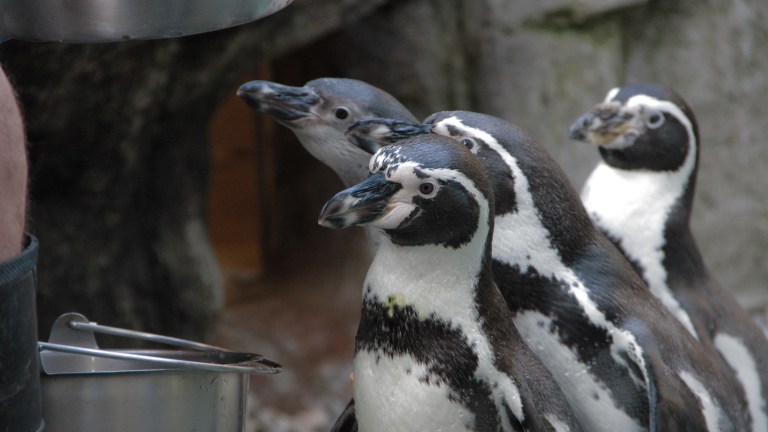
The first secret of the zoo is that, thanks to Secrets of the Zoo, there aren’t many secrets at the zoo. Through two and a half seasons of television, Nat Geo WILD’s series has taken viewers behind the scenes of one of the largest and most popular zoos in the country: the Columbus Zoo and Aquarium in Columbus, Ohio.
While the zoo and its associated conservation center, The Wilds, are staggering in their scale and scope (covering over 9,300 acres altogether and hosting more than 7,000 animals), Secrets of the Zoo makes the whole operation feel a lot more intimate. Recently, Nat Geo WILD gave us the opportunity to take in several of those acres and animals, inviting Den of Geek on a visit to meet with some creatures and the human beings who care for them.
Like just about everywhere else, the Columbus Zoo and Aquarium is closed now due to the coronavirus outbreak, and has been since March 16. Five days earlier, however, the massive property was sparsely populated with animal lovers and onlookers powering through some miserable Midwestern early spring weather.
The first stop on our day at the zoo is to Animal Programs, a nondescript brown building at the top of a hill where much of the behind the scenes action from the series takes place. In the cozy structure, two of the zoo’s latest additions are enjoying a bottled breakfast in a heavily-windowed room. The two baby cheetahs don’t even have names yet but they’ve already made history. The young boy and girl are the world’s first cheetah cubs born via in vitro fertilization.
Approximately 80% of adult female cheetahs in North America have never reproduced. The death rate for cheetahs has exceeded the birth rate worldwide for 13 of the past 16 years. This was the third time scientists ever attempted cheetah embryo transfer and, thanks to the combined effort of the Columbus Zoo and cheetah foster mother Isabelle, it’s the first time they’ve succeeded. The three-week-olds are unaware they’ve made history though. Mostly they’re just hungry. According to Animal Programs specialist Jarod Miller, the boy is big for a baby cheetah and after some stalling, the girl is starting to gain weight as well.
But the cheetahs are understandably too precious and important to spend any time with us. Instead, Animal Programs has heard we like birds and it is birds that Animal Programs is all too happy to provide. In quick succession, we meet Renaldo the black vulture, and Chovie the South African penguin.
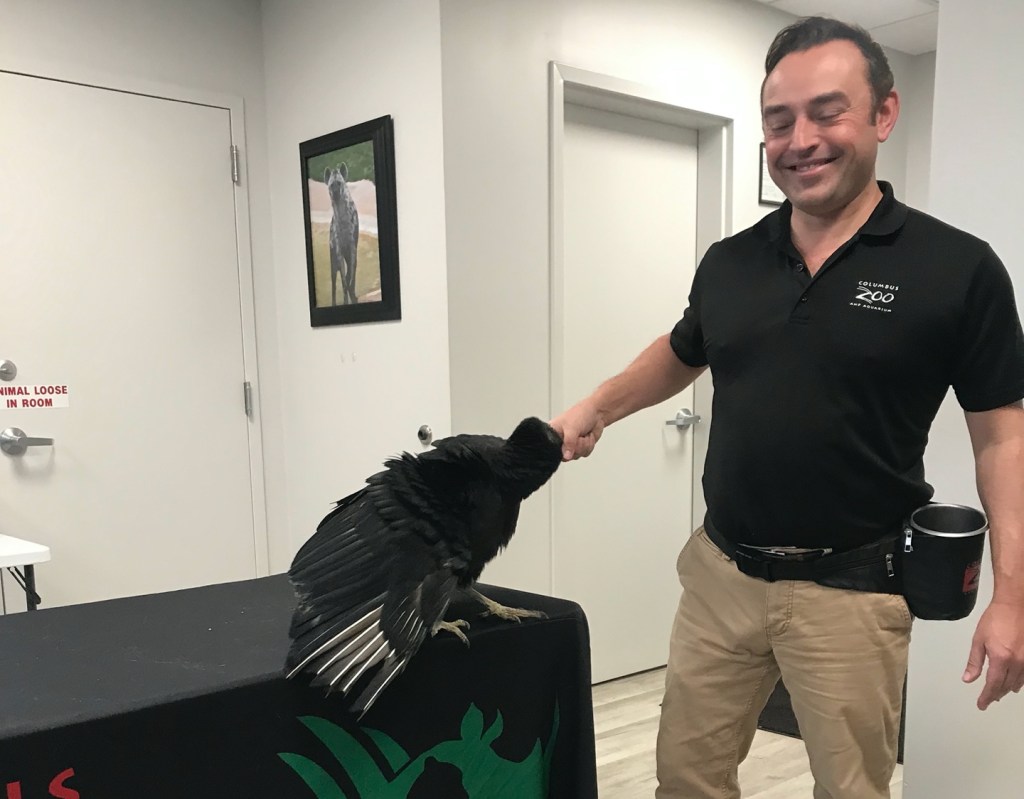
Renaldo is, in a word, a lunatic. Seemingly spring-loaded and completely unafraid of anything, he tears around the room, wings spread and cheerfully gobbling a mass of red mush from Miller’s fist
“He’s pretty durable,” Miller says as Renaldo loses his balance on a wooden bench and flops onto the floor.
Chovie on the other hand is aloof and cautious of these latest visitors. Chovie is an “opinionated” penguin, according to Miller, who says penguins are like cats. Sure enough, the pretty little bird has eyes only for her usual human friends and not their strange guest.
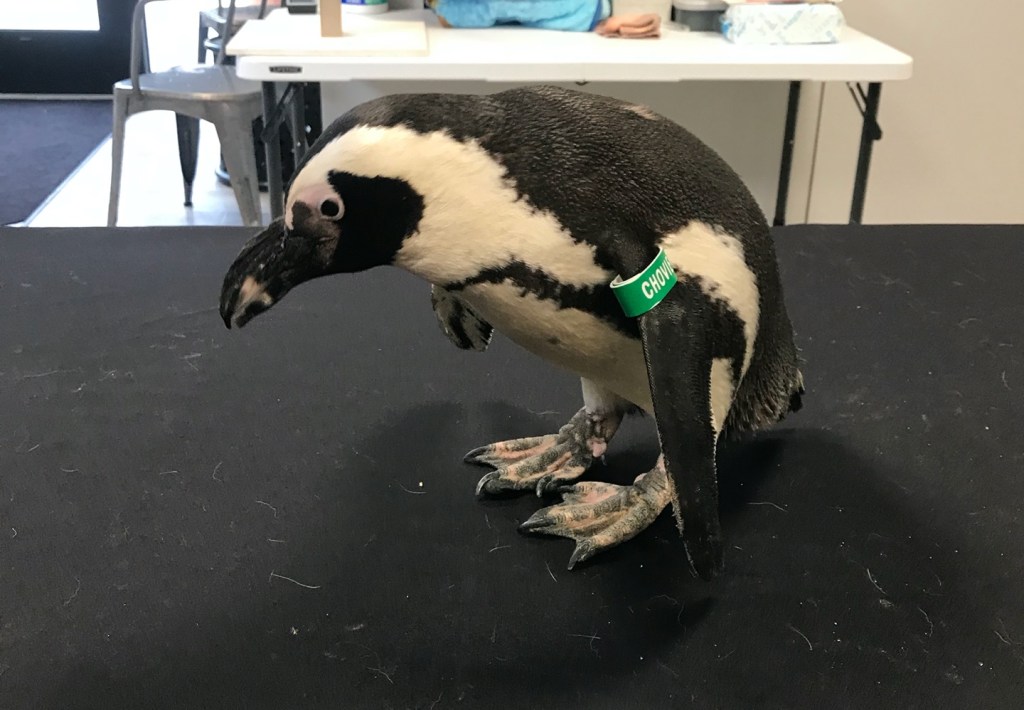
Zookeeping is a scientific endeavor to be sure. Years worth of hardfought knowledge and training goes into keeping an animal happy, healthy, and safe. But listening to Miller and fellow animal programs specialist Tommy Dodge, it’s impossible not to think of how much good old-fashioned love goes into it as well.
“She was the first penguin for our department,” Miller says as Chovie spreads out onto his forearm like a contented football. “We got her as an egg from another zoo and hers was the only one that was fertile. We would go down and turn the egg and check humidity and temperature. It was like watching a plant that never grew.”
But once hatched, Chovie did grow into the happy waddling bird before us today. Raising animals straight from the egg is just one of the ways that the Columbus Zoo welcomes its guests. Another way creatures come through the door, and a crucial one to its conservationist mission, is through rescue.
Secrets of the Zoo’s very first episode featured a plot in which zookeepers went down to Alabama to liberate 16 macaws from a bird mill. Grover, a hyacinth macaw, was one of those birds.
Hyacinth macaws are both the biggest and most valuable parrot species, making them a frequent target for illegal breeding techniques. When the Columbus Zoo found Grover and some of her bird brethren she was living in a box with only enough room to lay eggs. The zookeepers thought she was close to 30 years old due to the condition of her body but in reality she is under 10.
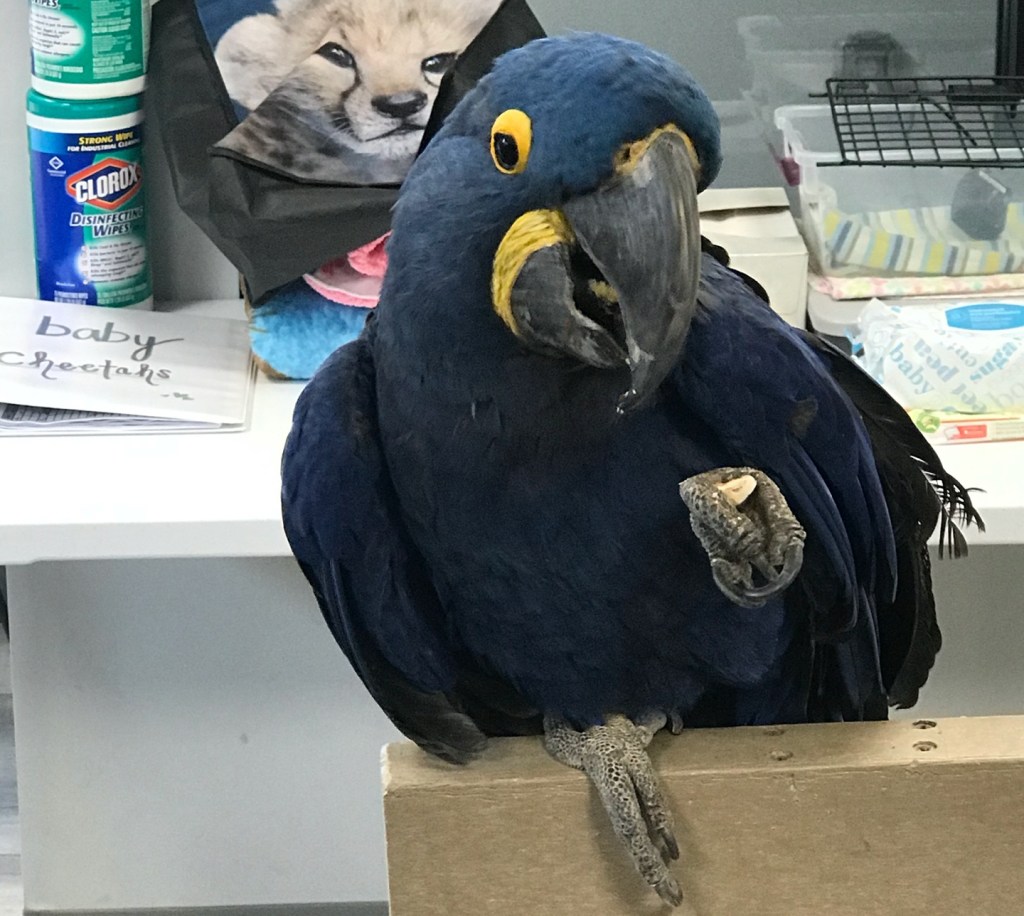
It’s been two years since Grover’s episode aired and the blue and gold bird is doing much better now. Her ankle is a bit knotted and she still has a whispy rasp from some asthma-like scarring in her lungs. To get a proper X-Ray, Dodge has trained Grover to lift her wings out when given a treat. Now she holds out her wings frequently like she wants to give everyone a big, feathery hug.
“She’s pretty awesome,” Dodge says. “She’s gone from hiding in a milk crate and probably being fed dog food to now she demands stuff. The other day I handed her a sunflower seed and it was empty. And she went down and pulled on my finger nail for a little bit and was looking at me.”
It’s disarming and charming when learned zookeepers and specialists at the Columbus Zoo can’t help but nerd out about their animals. It also turns out to be a common occurrence as we head over to Manatee Coast at the Shores & Aquarium section.
“Manatees are just the grooviest things on Earth,” veteran Shores Keeper and Secrets of the Zoo mainstay Dan Nellis says as a handful of chubby sea cows munch on some lettuce in a tank before us.
The manatees, as it turns out, are indeed pretty groovy. The behemoths gently float around their enormous tank, eating eight and a half cases of lettuce per day and co-existing alongside an ancient turtle named Buddy, two pelicans named Barbie and Ken, and some other assorted water birds. Like the newborn cheetahs before them, the manatees don’t understand just how big a deal they are to the zoo around them.
The manatee program is one of the Columbus Zoo’s most successful ventures in terms of rehabilitation. The zoo has been rehabilitating and releasing these gentle beasts for a long time. Manatees are mainstays in the Florida Keys but in recent years their peaceful existence has become more perilous.
“These guys get into quite a bit of trouble,” Nellis says. “We’re talking about an animal that evolved with no predator. And then man shows up with propellers, fishing gear, and herbicides and pesticides. Unfortunately there are quite a few orphans.”
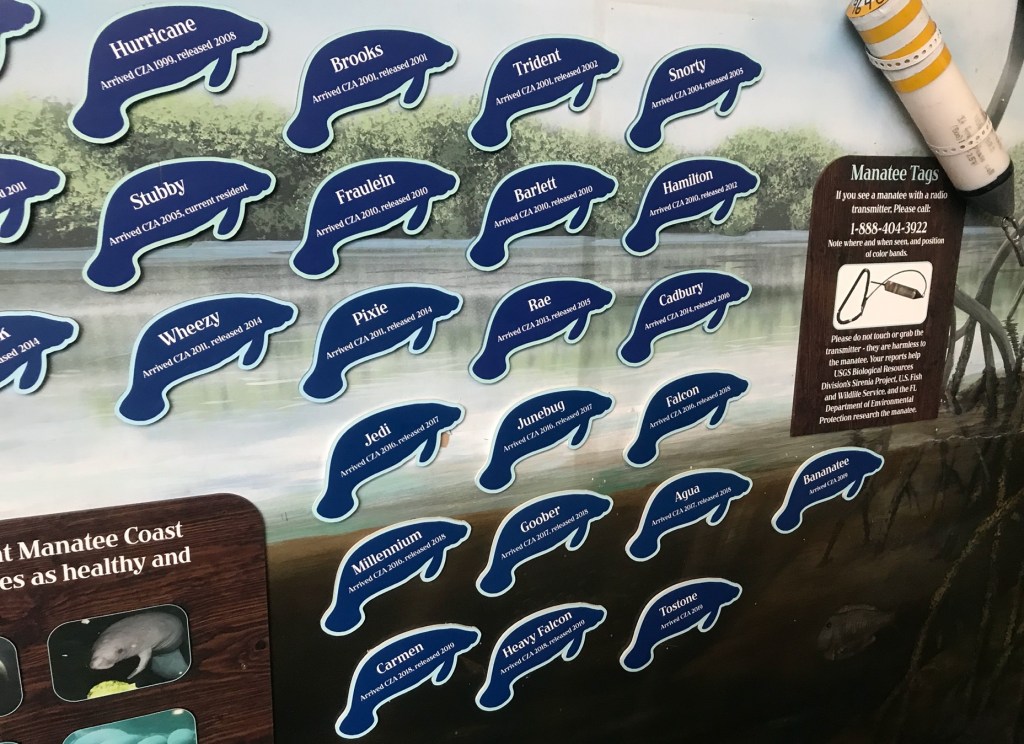
The Columbus Zoo takes in those orphans, makes sure they get their lettuce, and if all goes according to plan, releases them (with the help of FedEx) back into the wild. It’s an exhaustive and fascinating process that Secrets of the Zoo has covered in the first season’s fourth episode. As of today, the Zoo has rehabilitated 31 manatees and released 27. But through it all, one manatee has remained a constant.
Stubby was rescued in 1995 after being hit by a boat and losing a couple of vertebrae in her tail. Now she operates as a maternal presence to the many wayward manatee calves that have come through the Columbus Zoo over the past few decades.
“Stubby loves these orphans. She loves the babies. It gives her a job to do. It puts them at ease. It makes our job a lot easier,” Nellis says.
Stubby has had a rough go of it at times, losing as much as 200 pounds when she’s depressed and has no orphans to raise. But now she floats proudly at a healthy 2,300 pounds and enjoys an occasional monkey biscuit treat.
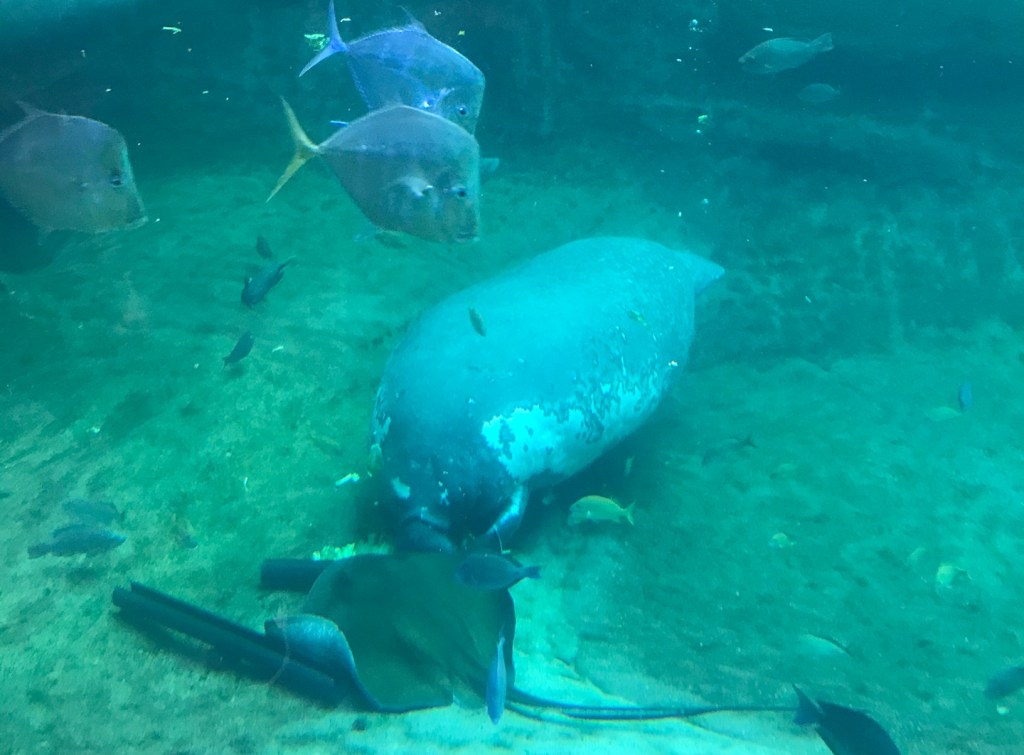
“I’m fighting for her. But with her tail, she’s probably going to be here the rest of her life,” Nellis says. “I’m retiring soon and if we both disappear give me three days and I’ll meet you down in Key West.”
As evidenced by the manatees from Key West, one of the important lessons from the Columbus Zoo is that North Americans don’t have to leave their continent to come across fascinating and “exotic” animals. Nowhere is that more apparent than at the zoo’s North America exhibit where brown bears, polar bears, arctic foxes, and more hold sway.
The polar bears in particular might be the real stars of Secrets of the Zoo. Females Anana and Aurora have appeared in several of the series episodes and they were joined by new addition, the male Lee, in the season 2 finale. The zoo has had good fortune in breeding polar bears. After male Nanuq died at the wizened polar bear age of 29 in 2017, Lee was brought in from the Denver Zoo to keep the reproductive good times rolling. And that he did, siring a cub with Aurora shortly after his arrival.
Now Aurora remains behind the scenes in the maternity section with the unnamed 104-day old cub and Lee seems a little lost.
“He doesn’t know that he’s a dad already,” North America section keeper Ellie Shriver explains as Lee paces restlessly. “We’re just like ‘Relax! You’ve done it.’”
Shriver thinks some food might settle Lee down. But when frozen meat and fish rains down from the sky, Lee only gives it some passing bites before jumping into his frigid lake.
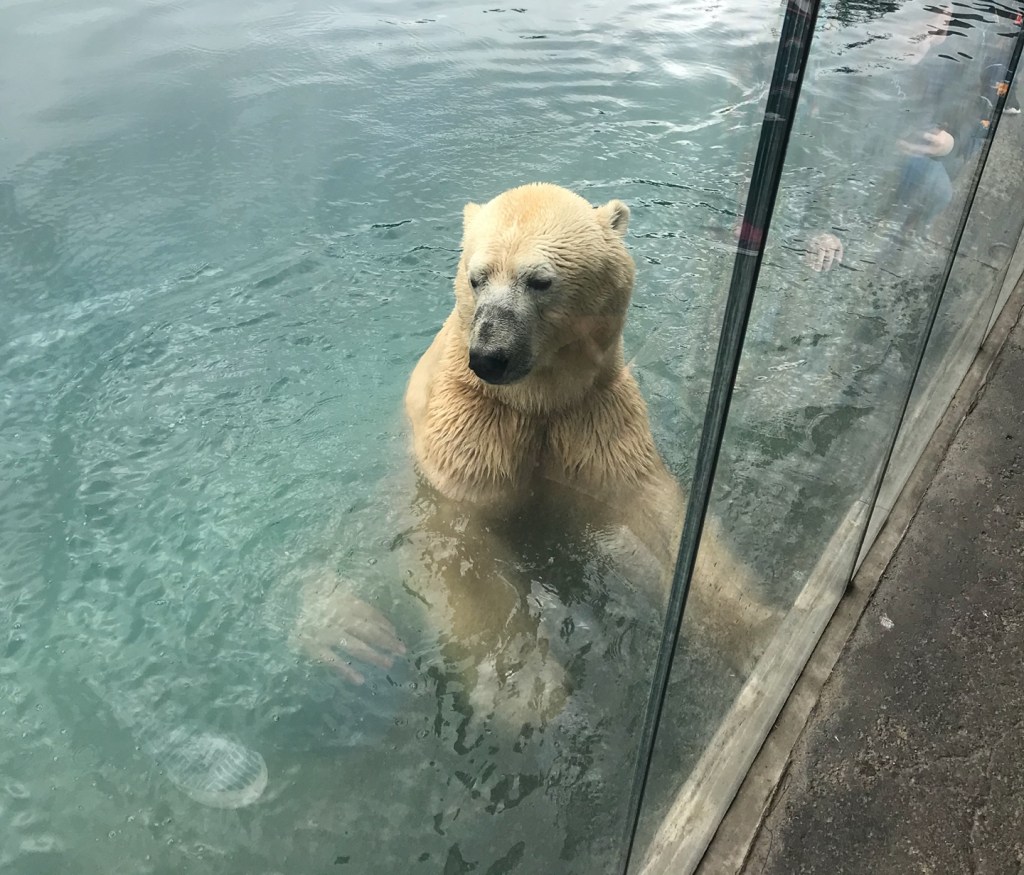
Polar bear cubs have become a bit passé to local media and zoo-goers since Aurora has successfully given birth before and the cute baby cheetahs take up the lion’s share of attention. But what Lee and Aurora have done remains impressive and important for any zoo. Polar bears have one of the lowest reproductive rates for any mammal, given that the species is a “delayed implanter.” This means that even after an egg is fertilized (usually in the spring), it won’t implant in the womb until fall has arrived and the body is confident that it’s built up enough fat to provide for both mother and child.
“That’s what’s impeding them in the Arctic,” Shriver says. “Due to climate change. They have less time to hunt, so they have less weight.”
The polar bears at the Columbus Zoo, however, have plenty of weight. In fact Anana and Lee seem perfectly happy and healthy. As do Stubby, Grover, Chovie, Ronaldo, the cheetah babies with no names, and every other creature out and about in the chilly drizzle.
Like with Grover’s swollen ankle or the polar bears’ blood tests, Secrets of the Zoo never shies away from the gnarlier aspects of zoo upkeep. Sometimes animals get sick or injured. Sometimes they even have to go under the knife and the series then takes viewers inside the sterile operating rooms all too familiar on television. It’s important to both the show and zoo’s mission to explore the clinical, scientific aspects of zookeeping.
Equally as important to Secrets of the Zoo’s mission is to simply show the animals being animals. And that’s just what they are on this last lovely day before Ohio shut down. Two more episodes of the show will air this season. Sometime after that the Columbus Zoo will reopen to the public. Until then the animals and their human caretakers and friends will be in Columbus, coming up with some new secrets.
Secrets of the Zoo season 3 will air its finale on April 26 at 9 p.m. ET on Nat Geo WILD.
